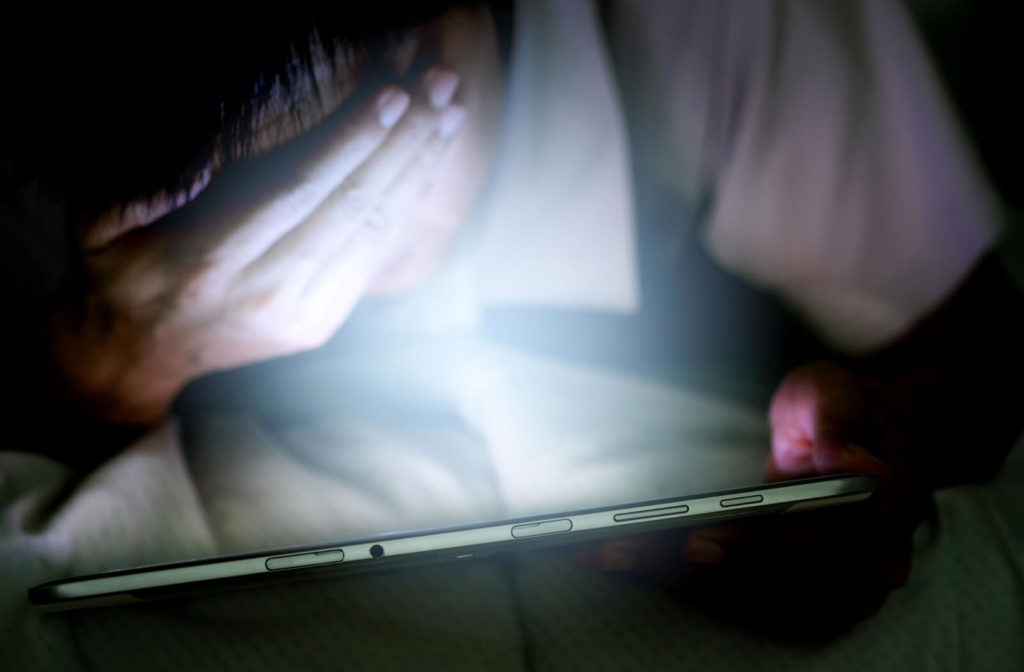Eye strain is a common issue that many people may suffer from after prolonged use of a digital device. Irritation from eye strain does not only occur in adults but can happen to children too, who are in front of a screen for long periods of time.
Eye strain, also known as computer vision syndrome or digital eye strain, can last from a few minutes to several hours after your last interaction with a digital device. The symptoms of eye strain usually improve within a few minutes to several hours after a person stops using the screen or performs visual rest activities such as focusing on distant objects or taking frequent breaks.
However, in some cases, eye strain symptoms can persist for days or even weeks, especially if the person continues to engage in prolonged screen time without taking proper precautions. If there is a persistent change to your vision that does not go away, it could be a sign of something more serious and could be an emergency for which you will need immediate medical care.
What Are Some of The Symptoms of Eye Strain?
Eye strain can be a bother for many people. In most cases, it is not serious and can go away after you stop interacting with the object that is causing the strain. Some of the symptoms that you could be suffering from eye strain can include:
- Dry or watery eyes
- Being unable to or feeling like you’re unable to keep your eyes open
- Sore back, neck, and or shoulders
- Double or blurred visions
- Headache
- Difficulty concentrating
- Tired, itchy, twitching or sore eyes
You may experience these symptoms if you’re in front of a computer for 2 or more hours a day. Whether it is for a job or school, there are many ways that you can treat eye strain, even if you are not able to change the amount of screen time per day, you can change how you interact with digital screens.
How Can I Treat Eye Strain?
Some simple changes that can be made to help to lessen the symptoms of eye strain. While you may not be able to completely eliminate major causes of eye strain, there are some treatment options available.
- Blue light blocking glasses: Even if you do not wear glasses normally for corrective issues, you may benefit from specially designed glasses to block or filter blue light. These glasses can help when you are needing to look at a screen for a long period and can reduce the blue light that is penetrating your eyes.
- Positioning of digital screen: Depending on the location of your device or screen, there can be some adjustments made to improve your eye strain. By adjusting the light in the room around you, the position and height of the screen in relation to your neck and head, and your seating position, you can change or lighten some of the strain on your eyes.
- 20-20-20 rule: This rule helps you to remember to take rests and breaks in between screen time. To implement the 20-20-20 rule, take a 20 minute break and focus on things that are at least 20 feet away for 20 seconds.
- Blinking and artificial tears – While this may not be something you often think of, regular blinking can help to replenish the eyes’ natural moisture and stop your eyes from drying out. This can help with the strain of staring at a screen or device for a long period of time. As well as making sure that you are blinking frequently, you can use artificial tears to keep your eyes moist.
How Can I Prevent Eye Strain?
Treatment and prevention run along the same lines. By remembering how you can treat eye strain, you can often reduce or prevent it from occurring. There are several things that you can do to prevent eye strain. To help prevent digital eye strain it may help to change some factors such as:
- Length and frequency of screen time
- Lighting conditions
- Posture
- The 20-20-20 rule
- Using blue light blocking glasses
What if My Eye strain Does Not Go Away?
If your eye strain does not go away, even with proper precautions, breaks, or even isolation of the digital devices, you should seek medical care. When your symptoms do not go away or even worsen with time, there could be underlying conditions that could be affecting your eye health.
If you are unsure how you can best treat your eye strain or think that you could have underlying conditions, seek the advice of our eye doctors today. The doctors at Total Vision are here for all your eye care needs.


